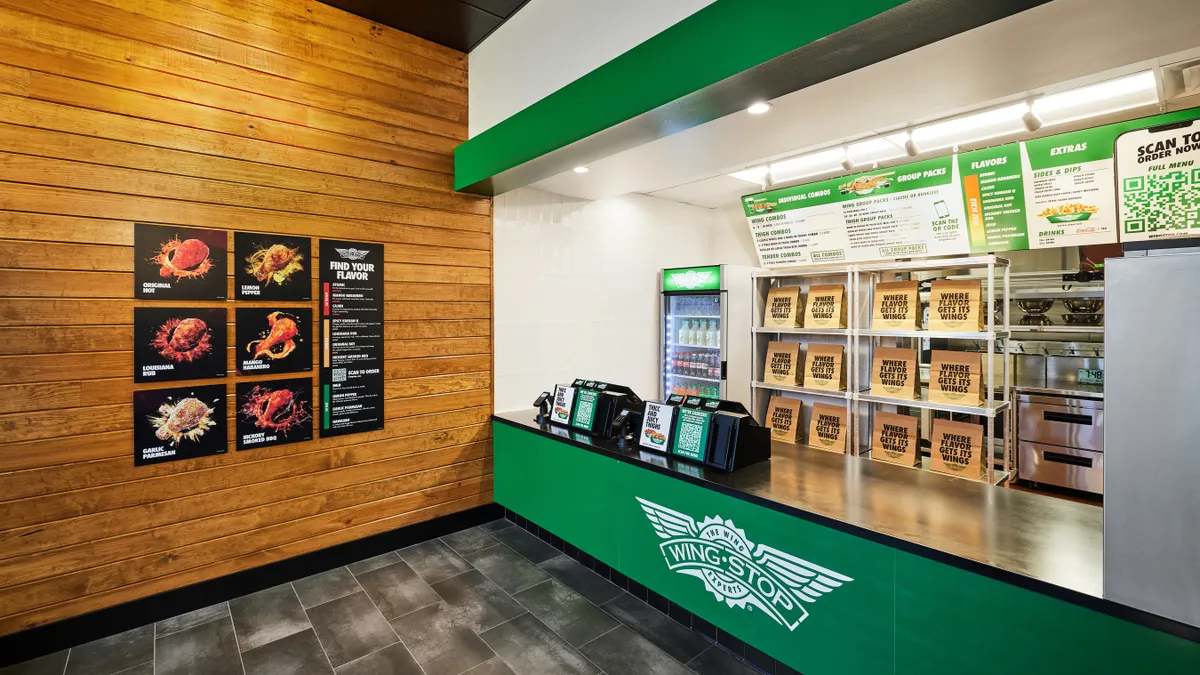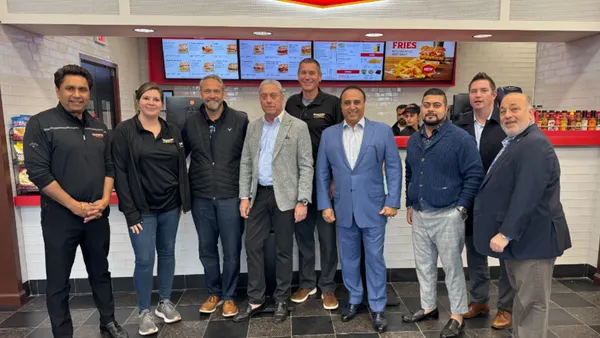Dive Brief:
- Wingstop is opening a cashless, digital-focused prototype in Dallas that will serve as an innovation lab to test new equipment and restaurant configurations, the chain announced Thursday.
- The 1,300-square-foot restaurant — which is roughly 400 feet smaller than the average Wingstop unit — offers no dining tables in its lobby. The concept builds toward Wingstop's goal of reaching 100% digital transactions with a focus on delivery and to-go orders.
- Wingstop's new store joins a slew of restaurant format designs that are being tested by QSR and fast casual chains to boost efficiency for digital diners.
Dive Insight:
Wingstop's "restaurant of the future" will allow the chain to try a variety of store format configurations in rapid succession, which will inform restaurant layouts the chain can develop in the future.
Carryout and delivery account for almost 100% of the company's sales, according to the press release, a trend that has been boosted by Wingstop's investment in virtual brands and ghost kitchen locations. Last summer, the chicken wing chain opened a number of ghost kitchen units in Manhattan, building on a global network of 15 ghost kitchens at that time.
Wingstop CEO Charles Morrison said in a statement that these ghost kitchen units cost substantially less than opening a new restaurant, and the chain's new smaller footprint concept may also offer cost savings. The restaurant has been expanding through a combination of traditional units and ghost kitchens.
"[This] is a glimpse into the future of Wingstop — focused on 100% digital transactions, seamless back of house operations, ongoing flavor innovation, and a business model centered around our fans, who love to dine off-premise," Wingstop's Chief Growth Officer Marisa Carona said about the new concept in a statement.
The growth of mobile ordering and digital ordering technology, like QR codes, has made it easier to open and sustain cashless stores focused entirely on off-premise offerings. This trend has sparked growing competition among major restaurant chains to develop store models that optimize off-premise ordering channels and reduce work for employees.
That competition predates the COVID-19 pandemic, with Starbucks opening its first pickup-only stores in China and the U.S. in 2019. Since then, chains have invested in more futuristic designs. Dunkin' opened a digital-only restaurant with no seating in Boston last year, for example, and Taco Bell launched a two-story restaurant with four drive-thru lanes.










